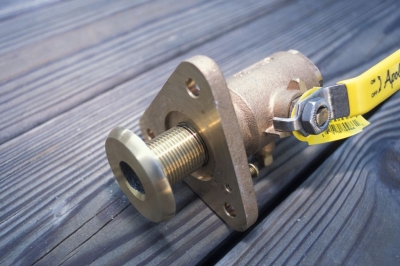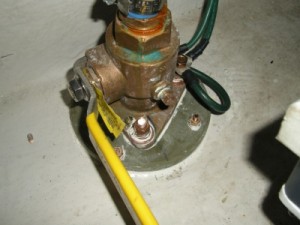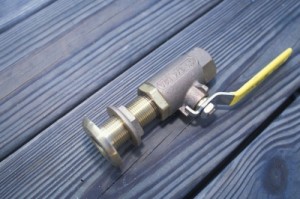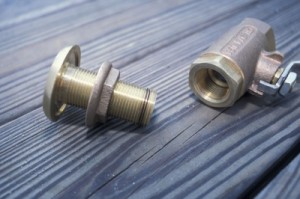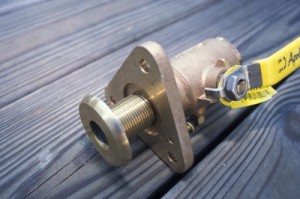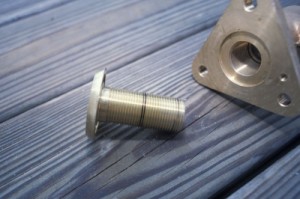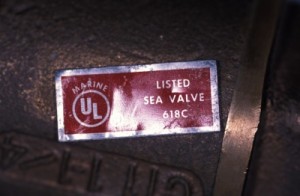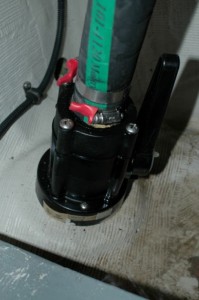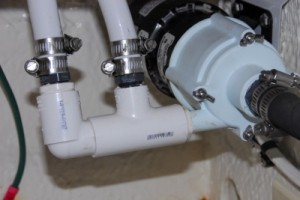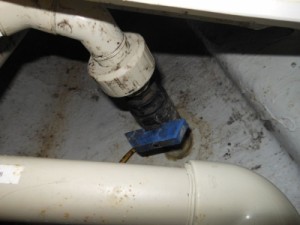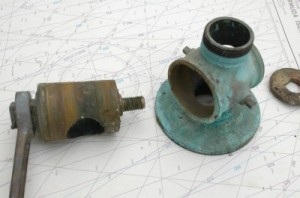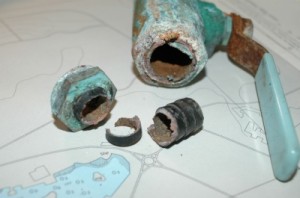Seacock Selection, Service, and Avoiding the Pitfalls
By Steve D’Antonio
Photos by Steve D’Antonio
Proper seacock installations, like the one shown here, are robust and reliable. Many, on the other hand, fail to make the grade.
A few months ago I inspected a vessel for a client. He’d recently purchased her and was in the process of supervising a refit. During my review, I noted that all of the vessel’s seacocks had been recently replaced. Strangely, and disappointingly, all but two were installed using incorrect methods and materials. The error was a common one, in short, the plumbing fittings’ threads were incompatible, more about which below. As difficult as that may be to believe, this is an exceptionally common installation error and one that is routinely defended by installers and boat builders, and this case was no exception. When the client brought my observations, which included citations from American Boat and Yacht Council guidelines, to the attention of the yard that carried out the work, their refrain was predictable, ‘We’ve been doing it this way for years, no one has ever complained’, or words to that effect. Ultimately, they yielded to the logic of the situation and agreed to replace the defective valves with properly installed seacocks.
Make no mistake about it, a failure of a seacock or related raw water plumbing component could lead to catastrophic flooding and the loss of your vessel, dockside or underway, attended or unattended.
This arrangement, a ball valve mated to a through hull fitting often passes for a seacock, however, it’s anything but.
The primary reason for this assembly’s failure to meet seacock standards is very simple, the threads are incompatible. The black line indicates the woefully inadequate engagement.
Through hull fittings and proper, flanged seacocks share the same thread type, NPS or straight.
The black line on this through hull fitting indicates the substantial thread engagement this assembly acheives, making it exceptionally strong.
A reliable, robust seacock installation begins with selecting the right components. Far too often, what passes for a seacock is in fact a mismatched collection of plumbing components. The most common hardware faux pas, mentioned in the previous paragraph, involves the mating of a through hull fitting, the mushroom-shaped male-threaded component, with an in-line ball valve. Make no mistake about it, regardless of the quality of the construction, these components were never designed by their respective manufacturers to be mated to each other for one exceedingly simple reason, the threads are entirely incompatible. Through hull fittings utilize straight or NPS threads, while in-line ball valves rely on tapered or NPT threads. The two may initially engage, however, it’s difficult to obtain more than two or three threads of engagement. Make certain your through hull fittings are attached to purpose made, flanged marine sea valves, all of which utilize properly mating NPS threads.
Not all UL Listed valves are UL Listed Marine Sea Valves.
Seacocks are primarily available in two materials, bronze and non-metallic or plastic. There’s much more to the story than simply selecting one of the two. Bronze seacocks must be made of the proper alloy, one that contains little or no zinc (bronzes are often referred to as zinc-free copper alloys.) Determining what a seacock is made of can be difficult if not impossible. If, however, it carries a UL Marine Sea Valve symbol or name plate, then you can be certain it’s made of the proper alloy. (Beware, a UL Listed valve is not the same as a UL Listed Sea Valve; many valves carry a UL listing, very few are Sea Valves or seacocks.) Brass, on the other hand is, because of its high zinc content, strictly forbidden for use in any raw water application. An exception to this rule being leaded red brass which is used for manufacturing many pipe nipples (straight pipe lengths that are threaded on both ends), it contains, or should contain no more than 15% zinc.
The stringent requirements for metallic as well as non-metallic seacocks means very few carry UL Marine approval or meet ABYC standards.
Plastic or non-metallic seacocks and through hull fittings, on the other hand, should utilize glass reinforced polymers (Forespar’s Marelon is one example) for their construction. Like brass, plastics such as PVC and nylon should never be used in any raw water applications, seacocks or otherwise. It’s telling that no seacocks made from those materials carry a UL Marine Sea Valve rating. Among other locations, I often see conventional plastics employed in air conditioning system and water makers installations. In those cases, many manufacturers, particularly those making watermakers, utilize PVC and other non-metallic plumbing fittings. If one of their fittings fails and leads to flooding, or worse, you or your insurance company may have a case against that manufacturer. If on the other hand you, your boat builder, or a sub-contractor use PVC for installation of a water maker, air conditioning system, seacock or any other raw water component, and it fails, you may be left holding the proverbial bag.
Conventional PVC plumbing is ill-suited for raw water use and should be avoided in locations where its failure will lead to flooding.
The maintenance a seacock receives depends on its style. For the ball valve variety, little is required in order to keep them operational, although they are liable to become fouled with growth. Their Teflon seals and typically chrome plated balls are self-lubricating; like all seacocks they benefit from monthly exercise or cycling. Non-metallic seacocks benefit from periodic lubrication, which requires the removal of the hose to expose the ball. Clean, dry and coat it with manufacturer-supplied lubricant (Forespar makes a Teflon-based product called MareLube, I’ve tested it and it works well.)
This “seacock” is in fact a polyethylene irrigation valve, making it inappropriate for use as a sea valve. The rigidly attached PVC plumbing imparts leverage to the installation, further jepordizing its reliability.
In my experience, there’s a tendency for professionals to use silicone-based lubricants on seacocks, believing them to somehow be superior and “space-age”. In fact, while silicone is an excellent lubricant, its typically light viscosity means it’s easily washed off or out of the valve. My preference for all metallic seacock lubrication, other than those that use rubber balls or cones, is Lubrimatic’s Marine Wheel Bearing Grease, it’s water-insoluble, sticky and, unlike silicone, lithium and other “light” greases, it resists being washed off. It’s green in color. Rubber cone valves call for a non-petroleum –based lubricant such as the aforementioned Teflon-based MareLube.
Traditional cone valves are extremely rugged and capable of being rebuilt over and over again.
Traditional cone-style seacocks may be disassembled and rebuilt, or at the very least lubricated, over and over again (I’ve successfully serviced 40-year old units.) Depending on their service environment this may be necessary from every one to five years. They may be taken apart, cleaned with a solvent such as mineral spirits, sanded with emery cloth to remove irregularities, lapped using valve grinding compound, lubricated and then reassembled. Some seacocks may be temporarily fit with grease or zerk fittings, which can be installed in place of the drain plugs. With the seacock in the open position, grease may be pumped into the cone area. Because most zerk fittings are made of mild steel, they should not be left in place after greasing is complete and make certain the drain plug is not corroded before it’s reinstalled. If the plug must be replaced it, like drain plugs on all raw water equipment such as sea strainers and water pumps, must be made of bronze rather than brass.
Don’t make the brass mistake. Because of its susceptibility to dezincification, brass should never be used in any raw water plumbing application. True, zinc-free bronze, on the other hand is ideal.
For more information on the services provided by Steve D’Antonio Marine Consulting, Inc. please e mail Steve at info@stevedmarineconsulting.com
or call 804-776-0981

